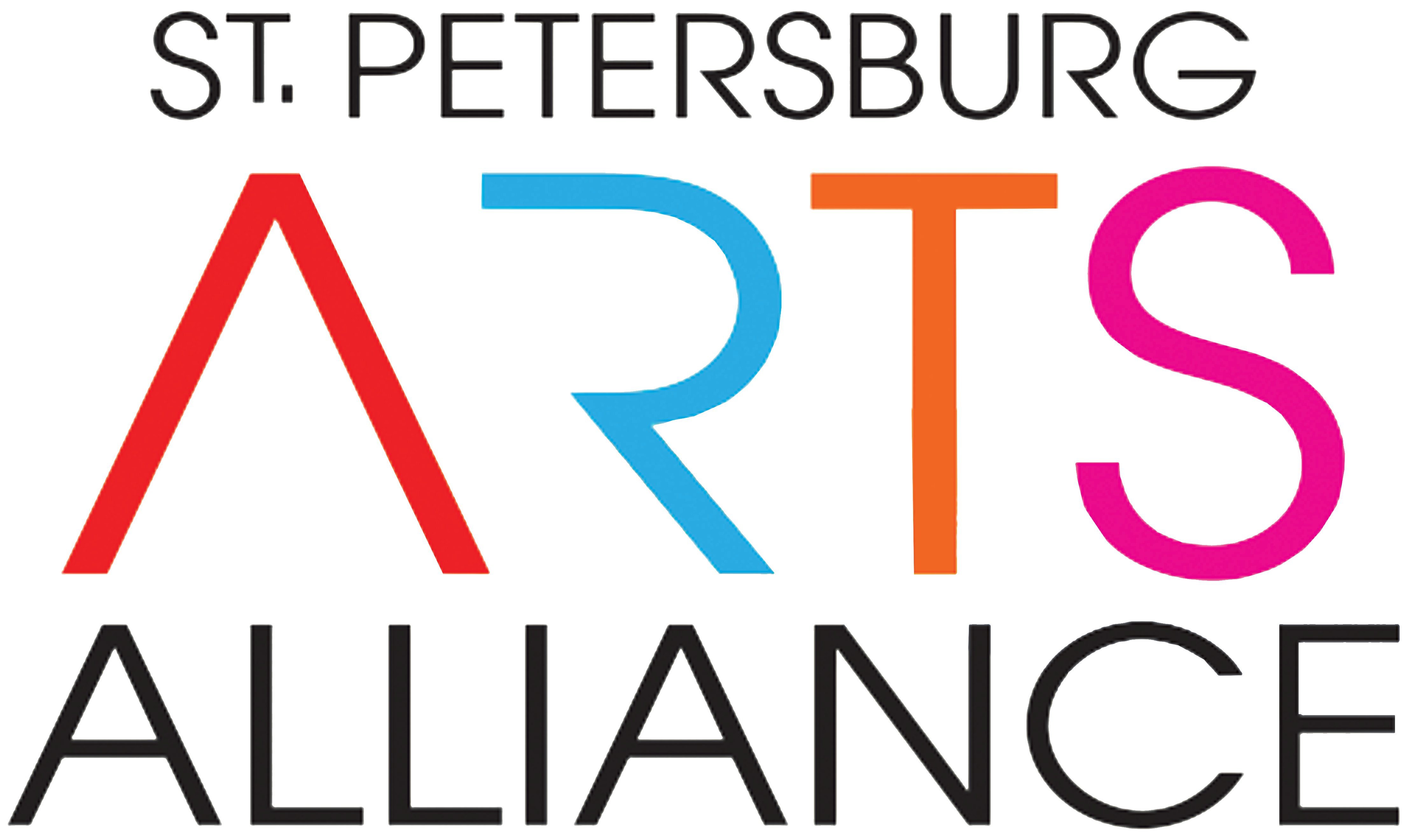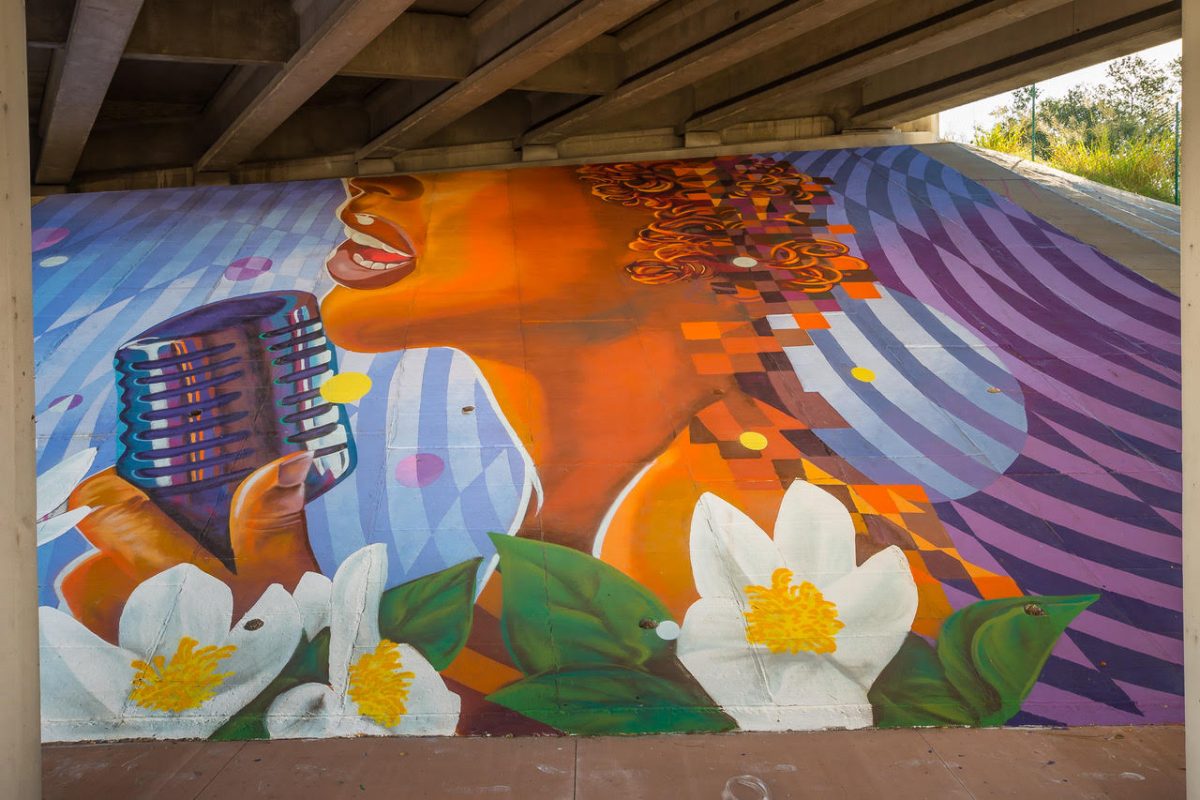ZuluPainter and Thirst
About ZuluPainter and Thirst
Based out of: St. Petersburg
About the Mural
The shady 22nd Street South underpass in the Deuces neighborhood boasts four beautiful murals created by two artists based right here in St. Petersburg – Zulu Painter and Thirst.The murals are on 22nd Street South, between 7th Avenue South and 9th Avenue South, just below busy I-275. They slope up both sides of the concrete embankment, 50 feet wide and 30 feet high.
These murals are part of the SHINE Festival’s Legacy Project. They’re a tribute to the musical past of this neighborhood and the Manhattan Casino, part of the “Chitlin Circuit” that brought musicians including Duke Ellington, Louis Armstrong, Nat King Cole and Ella Fitzgerald to St. Petersburg.
During segregation years, African American musicians weren’t welcome to play at many white venues. The Manhattan Casino was part of a network of bars, barns, dancehalls, recreation centers, nightclubs, restaurants and concert halls where it was safe for African-American musicians to perform.
These colorful murals depict four musicians – a trumpet player, a pianist, a guitarist and a singer, two on each side of the street.
On the southwest corner is a trumpet player – a closeup of enormous hands, playing a horn. The gold trumpet stretches as tall as the mural. The fingers of one hand are on the valves, fingers pointed to our right. His other hand holds the horn, fingers pointed down.
His hands are shades of brown, disappearing into golden shirt cuffs. The trumpet and hands are realistic, but the cuffs break into pixelated blocks of gold, orange and blue. The mural is framed by stripes of light and dark purple, and huge flowers with pink and white petals.
On the northwest corner is a pianist. Across the top third of the mural is a huge piano keyboard, shaded in yellows, blues and purples, as if reflecting stage lights.
Rising from the bottom of the mural are two brown arms, the hands playing a chord at the center of the keyboard. The player’s forearms are broken into pixelated shades of brown.
Between the player’s arms, and stretching to the right, below the keyboard, is a pattern of swirling checkered squares in light and dark purple. On the left, below the keyboard, a pattern of purple vertical ovals on a light blue background. Emerging from the ground, scattered around the piano player’s arms, are yellow aster flowers.
On the northeast corner is a guitarist. The left side of the mural is patterns of concentric circles in lavender and purple, like patterns in the sand. Out of the circles, abstracted squares in many shades of brown become a giant, realistic hand strumming the top string of a light purple guitar.
The fingers are curled lightly and a brass pick is wrapped around his thumb. The guitar is much bigger than the mural – only the sound hole and fretboard, the top curve of the body and part of the neck fit on the wall.
The giant fretboard, in dark purple with lavender strings and fret lines, extends up and to our right, past the top of the mural. The player’s other hand forms a chord just a few frets from the guitar’s body. The wrist also dissolves into abstract squares of browns and tans, before it blends into a pattern of arcing squares of lavender, purple and blue. Huge yellow hibiscus blossoms with green leaves are scattered across the bottom, as tall as a person.
On the southeast corner is the singer. A woman in profile facing to our left, her shoulders just above the ground, head thrown back, singing into a huge old-fashioned microphone. Her image is larger than the mural – only her open lips, graceful cheek, wavy red-brown curls and the bottom curve of her nose fit on the wall.
Her skin is golden brown, darker towards the back as if she’s looking into a stage light. Curls of reddish-gold-brown hair, glinting in the light, fall to her neck and dissolve into abstract squares of browns, reds and tans that curve over her bare shoulder.
Her face aches with the emotion of the song. Her hand holds an old silver ribbon microphone, the style you might find in a photo of Billie Holiday. On the right side of the mural, the background is blue and purple geometric swirls, edging up to the back of her neck.
On the left, around the microphone and her lovely face, are alternating vertical stripes of light blue and light purple, scattered with big pink dots. White camellias with green leaves rise from the bottom of the mural, nestling around her hand and shoulders.
In the 1920s, the Manhattan Casino was one of the most important stops for African American touring musicians. Known as “The Home of Happy Feet,” it was the heart of this neighborhood for many years.
The Deuces neighborhood is home to many murals by ZuluPainter, including a view of the past and present of the neighborhood on the southeast corner of 22nd Street South and 9th Avenue South. And a few blocks south of here, on 22nd Street, a beautiful mural of Ella Fitzgerald.
Just west of 22nd Street, on 9th Avenue South, is the thriving Carter G. Woodson African American Museum, where you can pick up the African American Heritage Trail, marking important neighborhood sites from 1868 into the civil rights era.
Explore the African American Heritage Trail at stpete.org/parks_and_recreation/african_american_heritage_trail.
Visit the Carter G. Woodson African American Museum at woodsonmuseum.org.
Find out more about the history of Jazz in Florida at exhibits.lib.usf.edu/exhibits/show/jazz-in-florida/venues/florida-chitlin-circuit.

